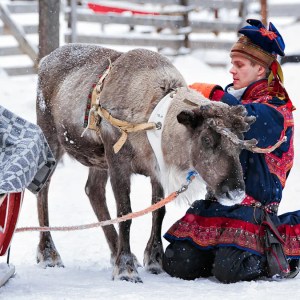Recent research reveals that modern speakers of Hungarian, Finnish, and Estonian share significant Siberian ancestry. This connection likely traces back to a group from the Altai Mountains of Central Asia, around 4,500 years ago.
Scientists studied ancient DNA to understand this ancestral link. They uncovered a patrilineal pattern—meaning lineage was traced through fathers. However, linking genetics to language is complex, and findings don’t definitively prove a language connection.
In a July study published in Nature, researchers examined the remains of 180 individuals who lived in Northern Eurasia from the Mesolithic to the Bronze Age (11,000 to 4,000 years ago). The results showed that ancient peoples with a DNA pattern called Yakutia_LNBA were linked to modern Uralic-speaking populations.
Uralic languages, like Finnish and Estonian, stand out from the surrounding Indo-European languages. According to Tian Chen Zeng, a graduate student at Harvard, the Yakutia_LNBA ancestry is unique to these Uralic-speaking groups, with no traces found in neighboring Indo-European populations.
The researchers identified the Yakutia_LNBA group in ancient Siberian bones. This culture was known for advanced pottery and tools. Archaeologists have noted that these innovations spread into regions that are now parts of Russia, Mongolia, and Kazakhstan. Zeng remarked that this DNA could help trace the movement of early Uralic-speaking communities.
However, linking genetics to language is challenging. As Catherine Frieman, an archaeologist, points out, genetic makeup doesn’t clarify which languages individuals spoke. Multilingualism was likely common in ancient populations, and language evolution probably involved both migration and integration of new speakers.
While the study sheds light on ancient DNA from eastern Eurasia, it doesn’t fully address the complexities of language. Frieman stresses that we shouldn’t confuse genetic data with specific languages, as the overlaps and interactions in ancient communities were far more intricate.
In the digital age, this research has sparked conversations online about the deep historical connections between cultures and languages. Many people are fascinated by how languages evolve and adapt over time, reflecting cultural interactions.
As we explore our past, studies like this remind us that the stories of migration and ancestry are woven into the languages we speak today, creating a rich tapestry of human history.
Source link
Uralic language, Ancient DNA, DNA pattern, Catherine Frieman, Siberia, Altai Mountains, researchers, Mesolithic period




















